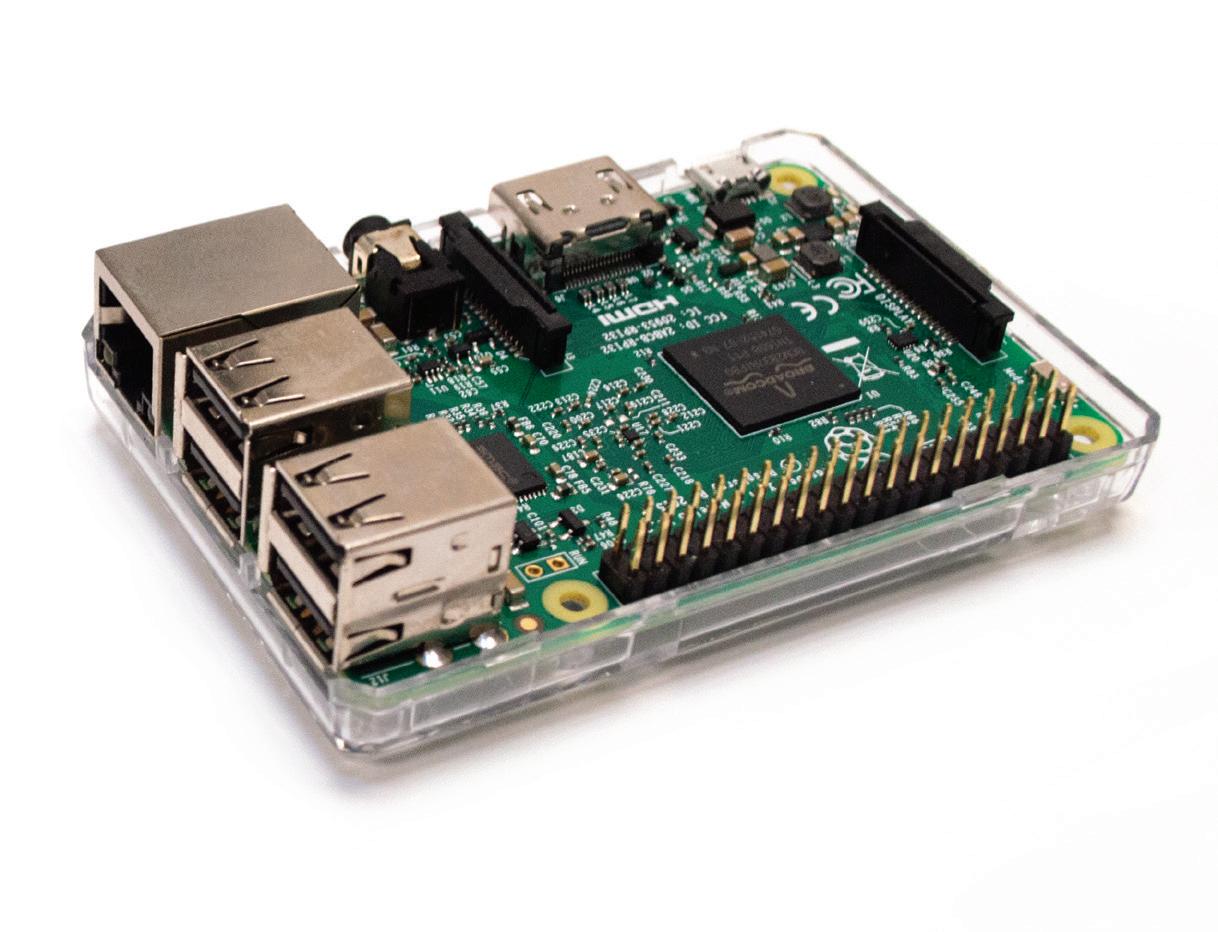
4 minute read
Raspberry pi
GEEK SPEAK!
WHAT IS RASPBERRY PI? HOW DOES IT WORK? BY ZACKARY SPINK
In this edition of Geek Speak, we learn about the rapid popularization of Raspberry Pi. In the last five years, Raspberry Pi has become the third most popular general-purpose computers on the market. Zackary Spink, Computer Science Specialist, and EAST Student Training instructor help us understand a little more about Raspberry Pi and how it works.
I am Zackary Spink, a Statewide Computer Science Specialist in Arkansas housed at Northeast Arkansas Educational Cooperative. Initially, I taught high school science and computer science in Northeast Arkansas. While I was a teacher, I taught myself video compositing, 2D/3D animation, 3D modeling, game development, and programming using various software, including Adobe After Effects, Autodesk Maya, and Unity. In my current position, as a Statewide Computer Science Specialist, I travel throughout the State training/assisting educators and students in all things computer science. The trainings range from incorporating computer science in the classroom to creating virtual reality worlds in the Unity software for the Oculus Rift or creating wearable electronics. I also get to explore new hardware and software related to computer science. I have met and worked with various individuals of the EAST staff through my current job, and I encounter EAST students often during my student-centered trainings around the state.
The Raspberry Pi can is used in similar ways as a desktop PC, such as browsing the internet, watching HD videos, playing games, or word-processing, to name a few. However, what sets the Raspberry Pi computer apart from a desktop, is its physical computing capabilities. Pins on the Pi can be programmed to take in sensor information, send information out to connected devices/hardware, or simply turn on an LED light. The Raspberry Pi can be used to create dancing Christmas light displays reacting to the music, Nerf gun motion tracking turrets utilizing image processing and machine learning, weather stations, hobby robotics, and much more. Also, due to the newer versions of the Raspberry Pi having WIFI built-in, they are becoming more popular with creating IoT (Internet of
WHO WEARS STEAMPUNK GOGGLES? Steampunk Goggles were usually worn by aviators and drivers during the Victorian age. The goggles help to protect the eyes from dirt, oil, steam, and sparks. They are commonly used in various industrial activities including woodworking and welding.
Here is an actual Raspberry Pi. It is about the length and width of a credit card.
Things) devices (e.g., automated plant watering systems). A quick internet search of “things to create with a Raspberry Pi” will shed some light on the versatility, creativity, and usage of these devices.
One of the significant roles I utilize the Raspberry Pi for is in helping students and educators become familiar with programming and physical computing and embolden them to consider exploring further these areas. One training I provide involves students and educators dabbling with the Python programming language utilizing its built-in Turtle module, a graphical programming module that allows code to come to life on the screen. They learn the physical computing capabilities of the Pi to create a physical controller that steers the turtles as they move across the screen by connecting various hardware components (e.g., buttons, wires, and LED lights). It allows them to interact with their code in the physical world outside of the computer and its standard input/output devices. The Raspberry Pi makes this possible due to it being created with programmable GPIO (General Purpose Input/ Output) pins that can take in physical actions, like the push of a button, or output information like turning on LEDs.
A future project I plan to begin working on is leveraging the Raspberry Pi and other various hardware to create a personal weather station that can be checked over the internet from anywhere around the world. I have received many requests from school districts that are interested in building and implementing weather stations. The best way for me to help is to build one myself, learn from the experience, and share the knowledge with the schools. The Turtle module is a Python adaptation of the Turtle graphics that are used for teaching kids to program in the Logo programming language. The name, Turtle, came from a robot that was programmed to draw by using an attached pen. The Turtle module allows newbie programmers to develop their skills my controlling Turtles (little cursors that represent the virtual robot) on the screen into drawing lines and creating shapes. These things make the journey in learning to program visual and more engaging for new learners.
The Raspberry Pi is a small, credit-card sized computer that is relatively inexpensive that makes learning how to program more accessible; sorry if you were expecting a food item. The device got its name from the old tradition of naming microcomputers after fruit in the past, and it was initially planned to run the Python programming language (Raspberry Pi) solely. It is a very popular computer for education, hobbyist, and DIYers.
The best way to contact me is via email at zspink@nea.k12.ar.us
A great resource to start exploring Raspberry Pi is the website: www.raspberrypi.org. It provides lots of information in regards to the Pis and shares a lot of beginner-friendly projects that can be created with the devices.
Looking for more things to do with Raspberry Pi? Visit https://www.cnet.com/howto/25-fun-things-to-do-with-araspberry-pi/ for 25 fun things to do!





